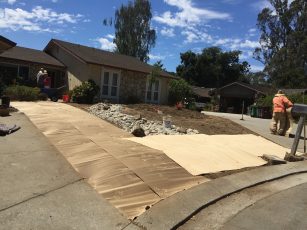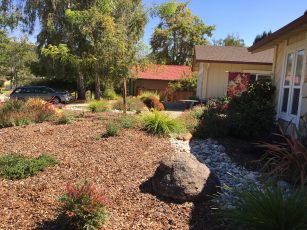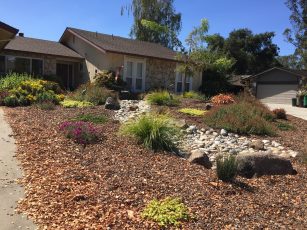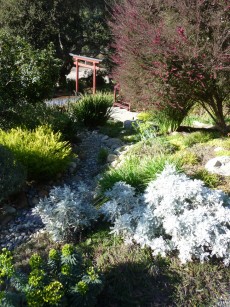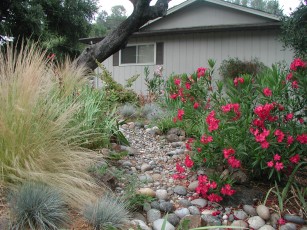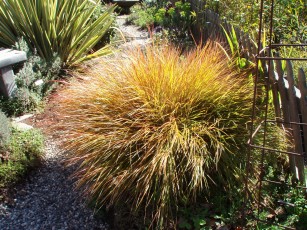There?s a saying that you should learn something new everyday and while visiting Robby Franks? Scotts Valley garden recently I added valuable lessons to my irrigation know-how and successful succulent and other low water-use plant cultivation.
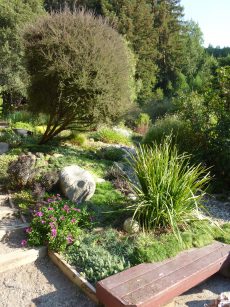
You might remember a prior column of two about this ?serial mole killer? as Robby laughingly described himself several years ago. He told me he?s licked his huge mole problem by exclusion and trapping plus he?s been the benefactor of a large gopher snake and a couple king snakes from the neighbors so he?s pretty confident now that his garden and all the work that goes into dividing and transplanting and mulching will not go in vain.
The soil in Robby?s garden is quite sandy and thin. He?s done wonders adding his own compost over the years. We all know mulching is one of the best ways to conserve water in the landscape. Robby has long been an advocate of composting and regularly renews the mulch in his garden. He even calls himself “Mr Mulch”. He has permeable paths and a dry river bed that allow rainwater runoff to soak into the soil slowly. He keeps his plants pruned in a naturalistic manner because “smaller plants use less water'”. But all this wasn’t enough. His 3 “dumb timers”, as he calls them, were using too much water. That’s when he started researching weather based smart irrigation timers.
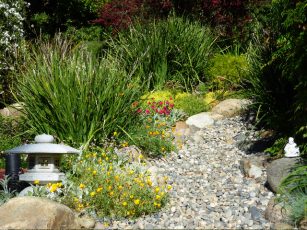
“To me it seemed like an easy way to conserve water and it’s better for the plants as well”, Robby said. “It will increase the irrigation times if the weather is hotter and dryer than usual, decrease it if colder and turn itself off if it rains”. After research Robby eventually chose the Rainbird ?Simple to Set” Smart Indoor/Outdoor Irrigation timer.
At a raised feeding platform a covey of quail were enjoying an afternoon snack. Below a group of Mexican marigold, fortnight lily, society garlic and euphorbia were thriving and Robby explained they are all watered with one irrigation hub called an Apollo 8 Port Bubbler. It is simple to install and screws onto an existing sprinkler riser or other 5/8? tubing. Each port can be adjusted to deliver just the right amount of water to each area. Attached a micro spray to the end of the 1/4? tubing and plants grow larger and deeper root systems.
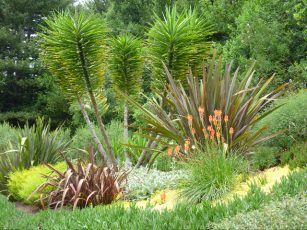
Robby?s garden is a diverse collection of plants from all over the world. He told me he?s been impressed how the cordyline are growing and considers them better performers than the popular New Zealand phormium in both heat and cold conditions. But succulents are his passion. He?s got five varieties of sedum, three types of aloe including his favorite ?Red Tip?, two varieties of sempervivum although he laments they are slower growing then he?d like, echeveria and his new favorite plant, Dyckia ?Red Devil?. Although technically not a succulent but in the genus bromeliad it does have similar characteristics. ?They remind me of an underwater scene?, he said. Their dark, spiky foliage did look a bit like giant sea anemone.
Robby does a lot a research and loves to share the knowledge he?s gained about plant cultivation and irrigation. Many a garden in Scotts Valley have benefited from his passion. Robby Frank is on a crusade to save water and Smart Irrigation and mulching is one way to do it.

